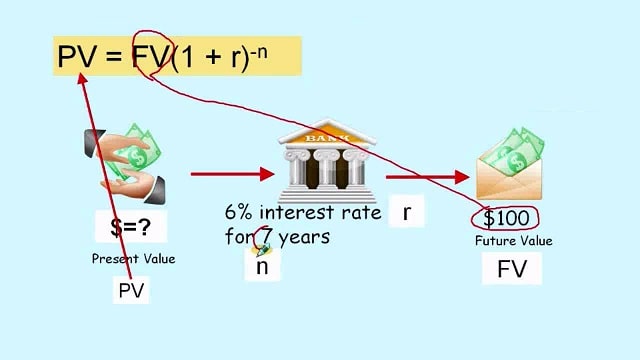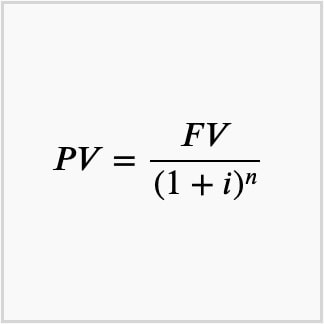What is Present Value?
Present value (PV) is the value that a certain cash flow that we will receive in the future has today.
Some Important points
- It allows for a fair comparison of the value of amounts of money at different points in time.
- Requires knowledge of future money amounts and a discount rate.
- It is done because there is a premise that having money now is preferable because it can be invested or spent immediately.
Present Value: A Simple Explanation
In simpler terms, value is a calculation made to determine the current value of an amount of money that we will not receive right now, but later.
For example, imagine someone offers you 2 options: give you 100 euros in a year, or give them to you now. Receiving 100 euros today is not the same as receiving them in the future due to inflation and the opportunity cost of investing that money and getting a good return. Therefore, if you wanted to know how much that money you will receive in the future is worth today, you would use the concept of present value to calculate it.
This is done to compare apples with apples. You cannot compare a value at different points in time. That is why the value of the future is brought to present value, to compare it with today’s value and assess whether it is worth waiting or not.
To calculate the PV we need to know two things: the cash flows that we will receive (or that we will pay in the future since the flows can also be negative) and a rate that allows us to discount these flows.
Present value concept
Present value seeks to reflect that it is always better to have an amount of money today than to receive it in the future.
Indeed, if we have the money today we can do something to make it productive, such as investing it in a company, buying shares or leaving it in the bank to pay us interest, among other options.
Even if we do not have a specific plan to invest the money, we can simply spend it to suit our tastes and we do not have to wait to receive it in the future.
Given the above, receiving an amount of money later (not today) implies an opportunity cost and this is what is reflected in the calculation of present value. Thus, we discount (penalize) the value of future flows to bring them to the present.
The concept of VP is commonly used to determine whether or not it is appropriate to invest in a particular project, value the assets that one already has, calculate the value of the pension that one will receive in old age, etc.
Present value calculation example
When we want to value an investment project, we discount the cash flows we will receive at a given rate. If the project’s PV is greater than zero, then the investment is profitable, otherwise we either earn nothing or lose money.
Let’s look at an example: Juan asks Pablo to rent him his vehicle for 3 years at an annual payment of 5,000 euros (the first payment is today).
After this time, it will be purchased for 45,000 euros. Juan’s opportunity cost is 5% per year. What is the present value (PV) of the project?
We calculate the VP:
VP= 5,000 + 5,000/(1+5%) + 5,000/(1+5%) 2 + 45,000/(1+5%) 3
VP= 53,170 euros (approximate value)


